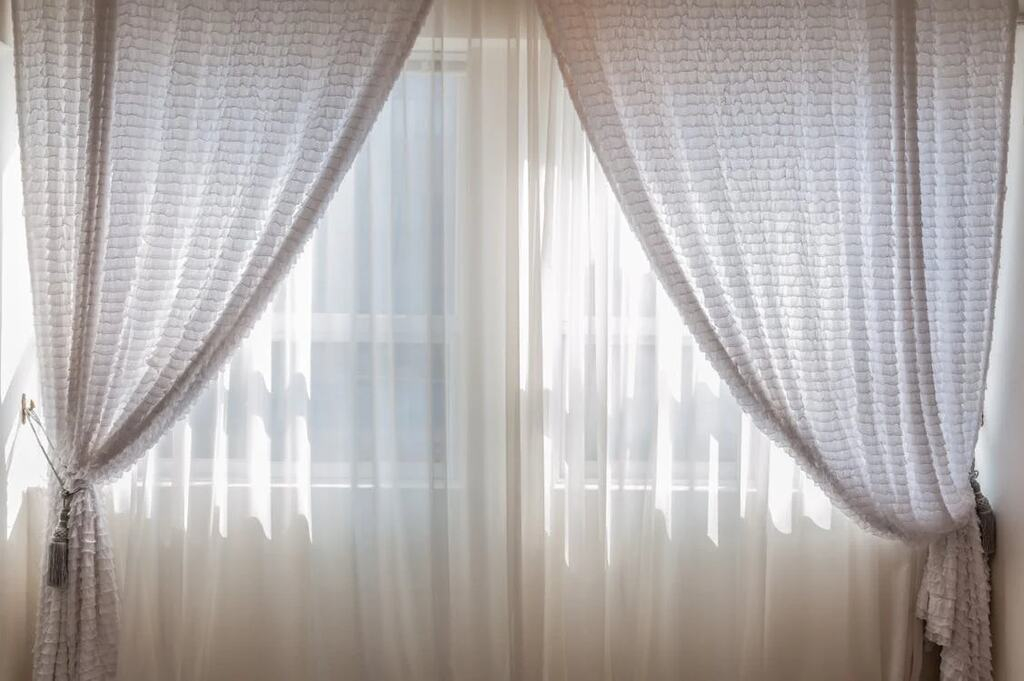Selecting the correct window covering material is essential to beautifying your space and making it functional and cosy. With all of the options available, it can be confusing to determine which will suit your needs the most specifically.
In this article, we will offer various types of window covering options, focusing on curtain fabric and how your selection changes the feeling of reality in your house or workplace.
Understanding the Purpose of Window Coverings
Before we get into the specific materials and dive right into window coverings, it is essential to understand their utility. But they also have a few roles, namely:
- Light Control: Window coverings help manage the amount of natural light entering a room, enhancing comfort.
- Privacy: They help you remain alone from the rest of the world and are great when you want to enjoy your space without being visible anywhere.
- Insulation: Some materials can keep your environment feeling warm in the winter and cool in the summer.
- Aesthetic Appeal: Window coverings can enhance a room’s decor by adding texture, colour, and style.
Popular Materials for Window Coverings
1. Curtain Fabric
Few window coverings are more versatile than curtain fabric. It is available in various designs, colours, and patterns, and you can find something that fits your decor well.
Common types of curtain fabrics include cotton, linen, polyester, silk, and velvet.
Cotton: This is a durable and breathable fabric. It is widely used daily in curtains because it is washable and easy to care for. Cotton curtains are available in multiple designs and shades, allowing you to create a formal or trendy style as necessary.
Linen: Linen is a breathable natural material with a soft drape. It gives a light and easy vibe to any space. However, Linen is also prone to wrinkles and requires more care than cotton. It is great for breezy spaces where the goal is a soft aesthetic.
Polyester: A synthetic fabric that is a strong fibre that is resistant to fading and other wear and tear. It comes in hundreds of styles and patterns, which provides versatility for use with any kind of decor. Polyester curtains are frequently a less costly alternative to natural fabrics and are chosen by cost-sensitive people.
Silk: Silk curtains are gorgeous and add an element of luxury to any space. They have a gorgeous shine and fall beautifully, perfect for formal occasions. However, silk is more fragile and may need to be dry-cleaned, which can be a disadvantage for some homeowners.
Velvet: Velvet is a rich, tactile fabric that brings a sense of depth and warmth to a space. It is a great option when light and insulation need to be kept out, such as in bedrooms and formal living spaces. That said, velvet can be bulkier and pricier than other choices.
2. Blinds and Shades
In addition to the curtain fabric, blinds and shades are available as window covering options. These options give you a clean, contemporary style with outstanding light control and privacy.
Wood Blinds: A traditional option, wooden blinds can make a space feel warm and elegant. They can suit any window size and are available in different stains and finishes. However, they can warp or fade over time, so that they may require extra maintenance.
Faux Wood Blinds: These are an economical alternative to genuine wood. They look like wood but are more moisture- and humidity-resistant, making them perfect for bathrooms and kitchens.
Cellular Shades: These are fabric materials loosely designed to gain a honeycomb form, offering exceptional insulation. They can be more or less transparent, and you can choose how much light to filter. Cellular shades are an energy-efficient option.
3. Combining Materials
Many homeowners choose to mix materials for their window coverings. For instance, you can mix sheer curtains with heavier drapes for a chic effect and the ability to modify the amount of light entering your home. This combination also adds texture and depth to the room.
When mixing materials, consider the space’s colour palette and tone. To create harmony, ensure the curtain fabric and all other materials coordinate.
Also, consider how you plan to use your window coverings, what kind of light you want to let in, and how much privacy you want to maintain.
Conclusion
Choosing the suitable fabric for your window treatments is one of the critical interior design concepts. Thanks to various choices, be it varied curtain fabric, shades, or blinds, you can make a space that suits your style while meeting your needs. From the smoothness of silk, which is also elegant, to the long-lasting polyester material, to the opulent velvet-like material in most Ottoman dresses, learning the specific characteristics of every material can help you choose the right one.
With some consideration about what you would like to get from your window coverings, you can make your house cosier, more private, and more stylish.

